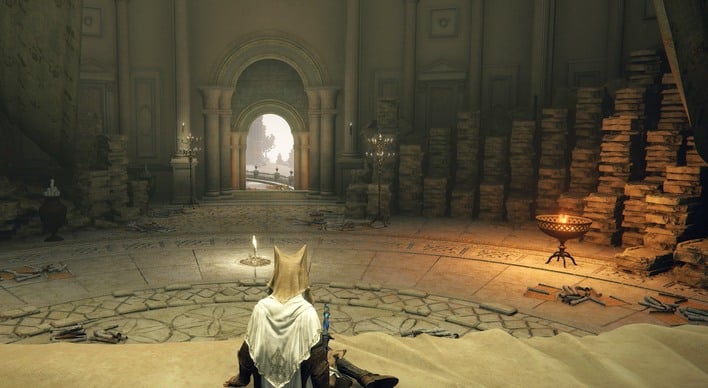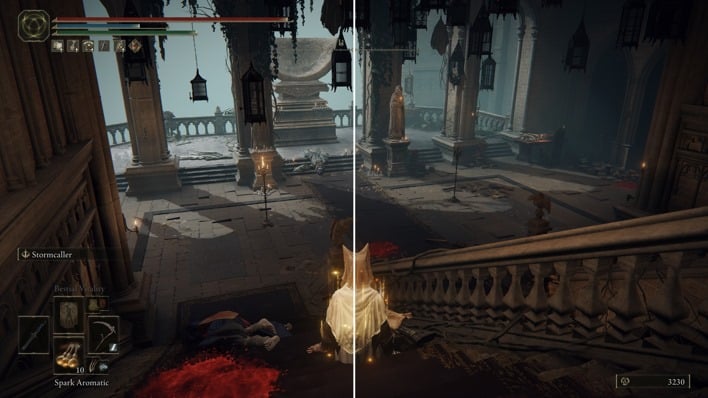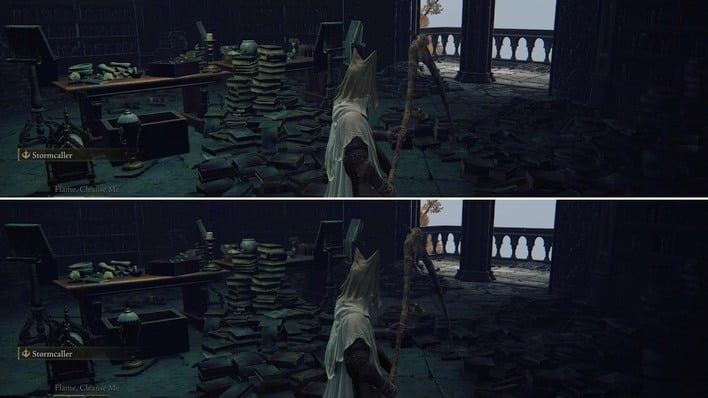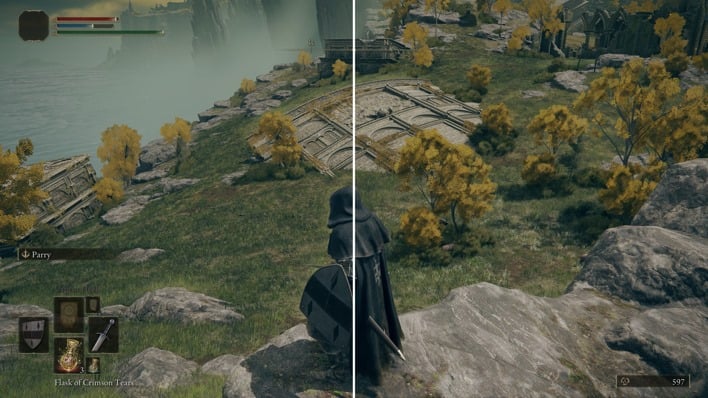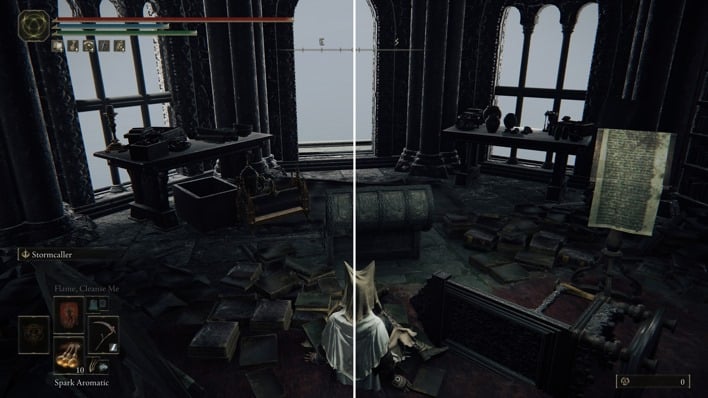Elden Ring Ray Tracing Patch Rolls Out And Slays Framerates
Real-time ray-traced graphics were big buzz around the time that Elden Ring was first announced. Close to the release, Bandai-Namco, the game's publisher, also announced that the developer FromSoftware would be releasing a patch for its magnum opus that adds ray-traced effects. Well, that patch is here now.
Official information about the update is pretty meager, but from our investigation, the ray-traced effects on offer seem to be limited to ray-traced ambient occlusion and a few ray-traced shadows, particularly those originating from sunlight. While that's a little disappointing—we would have liked to have seen full ray-traced global illumination, like in Cyberpunk 2077's "Psycho" mode, or in Dying Light 2—the effects on offer are still a noticeable upgrade over the original game's look.
Obviously, the most noticeable effect in most places is the ray-traced ambient occlusion. Replacing the simple (and decidedly last-gen) screen space effect that the game had before, the ray-traced ambient occlusion is both more accurate and more intense, with dark shadows appearing in corners and near ledges where there were none before. Shadows appear under small objects like books and fungal caps, and it really enriches the detail and realism of most scenes pretty significantly.

The release of the update was a bit of a surprise; many Elden Ring players thought that if the promised patch ever came, it would be with the game's upcoming Shadow of the Erdtree DLC. It's possible that the DLC was crafted with these visual effects in mind, and that FromSoftware wanted to get it out now to resolve any problems before punting with the expansion.
RT on the right. See the subtle shadows under the desk and foliage?
Official information about the update is pretty meager, but from our investigation, the ray-traced effects on offer seem to be limited to ray-traced ambient occlusion and a few ray-traced shadows, particularly those originating from sunlight. While that's a little disappointing—we would have liked to have seen full ray-traced global illumination, like in Cyberpunk 2077's "Psycho" mode, or in Dying Light 2—the effects on offer are still a noticeable upgrade over the original game's look.
The pictures in this post are cropped out of full-size screenshots; you can click them to see the full pictures, but they'll still be resized. If you want to see the original 4K screenshots, you can hit this link to the author's Google Drive. Looking at the images by doing an A-B comparison, toggling between -on and -off images, it becomes extremely evident where the ray-traced improvements are.
This is harder to see, but check the light on the landing and the shadows on the books.
Obviously, the most noticeable effect in most places is the ray-traced ambient occlusion. Replacing the simple (and decidedly last-gen) screen space effect that the game had before, the ray-traced ambient occlusion is both more accurate and more intense, with dark shadows appearing in corners and near ledges where there were none before. Shadows appear under small objects like books and fungal caps, and it really enriches the detail and realism of most scenes pretty significantly.
Meanwhile, the ray-traced shadows are primarily (if not exclusively) cast by sunlight. They're softer and more accurate than the game's original shadow maps, which could look a little bit unrealistically-precise at times where the new shadows have more of a fuzzy look. They're also a lot more common than the game's original shadows, being applied to more objects in the scene. Like with the RTAO, it's a subtle but significant improvement.
Note lack of the halo around the character caused by screen-space AO.
What's the cost? Well, a whole lot more RAM and VRAM usage, we can tell you that. Also a significant chunk of performance, if you're using a lower-end card, or a previous-generation AMD GPU. We haven't done detailed performance testing, and on your author's personal machine—with a Ryzen 7 5800X3D and a GeForce RTX 4080—there was no notable effect to performance at all, even playing in 4K, but most folks aren't rocking an RTX 4080 card.

Actually, even some users with high-end systems have complained of poor performance, and apparently it can really crush framerates on the consoles. Over on the Elden Ring subreddit, /u/F13menace says his game is running at "a rock solid 5fps" on Xbox Series X. A reply says "the framerate is janky as hell on the ps5," so apparently, it's no better on Sony's platform.
The game's original lighting could cause weird highlights on the edges of objects.
Normally in a ray-traced game, you could seek to offset the cost of the realistic visuals by using an intelligent upscaler, like DLSS, FSR, or XeSS. None of those are present in this game, and combined with the specific choice of effects that FromSoftware implemented, we suspect that this patch was primarily created with the PlayStation 5 and Xbox Series X in mind. You can (and maybe should) run FSR 2 on those consoles, but it's not available here—at least, not yet, anyway.
The patch also came along with the usual slew of balance changes and bug fixes, which you can read about at Bandai Namco's site.

